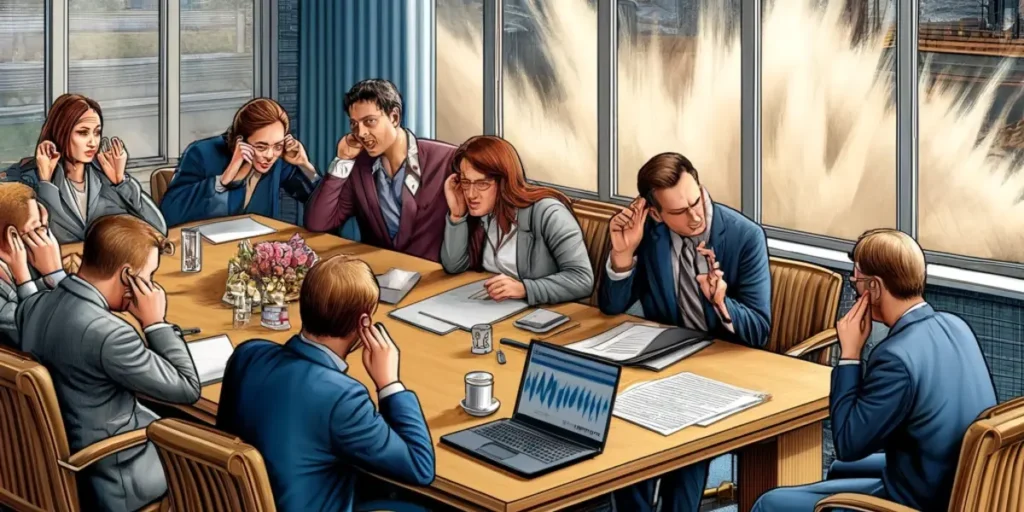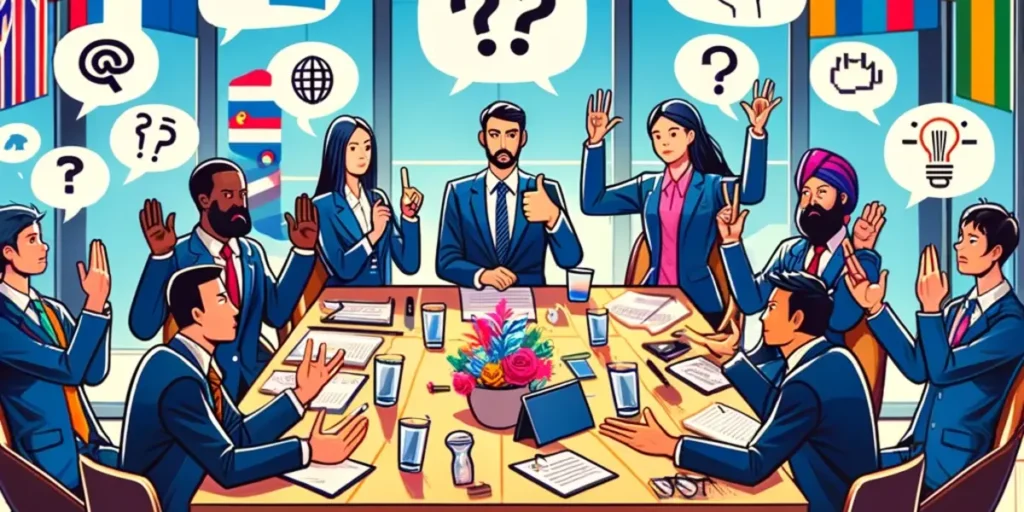In our increasingly connected world, clear and effective communication is more crucial than ever. However, it’s not always as straightforward as it seems. Various external barriers can significantly influence the effectiveness of our interactions. From technological issues like poor internet connection disrupting the flow of information in virtual meetings, to environmental factors like physical distance in remote work hindering rapport and understanding, these barriers can pose real challenges.
External barriers to communication are diverse and can originate from outside our immediate control. They can range from background noise in public spaces affecting our ability to hear and be understood, to physical barriers and disabilities that may limit nonverbal communication. Understanding these barriers and learning how to navigate them effectively is key to ensuring clear and impactful interactions. In this article, we’ll delve into the various types of external communication barriers and offer practical solutions for overcoming them.
What are External Barriers of Communication?
Often, our effectiveness in communication is impaired by numerous external challenges or impediments. These originate from factors beyond our immediate control. Encompassing a myriad of issues, from technological glitches to situational constraints, understanding and navigating these barriers is paramount for clear and impactful conversations.

One such impediment happens to be a poor internet connection during virtual meetings. How often have we heard, “Your voice is breaking up, can we reconnect?” This hurdle disrupts the smooth flow of information and can lead to significant miscommunication.
Another challenge in today’s remote work scenario is physical distance. Creating rapport and understanding becomes a herculean task when miles separate us. The solution? Scheduling regular video calls could serve as our bridge over this hindrance.
Moreover, let’s not forget the menace of background noise in public spaces. It’s a formidable constraint that hinders our ability to hear and be heard clearly. What’s the way out here? Finding a quieter spot can sometimes be the tactical move against this difficulty.
A peek into these examples shines a light on the diverse nature and substantial impact of such barriers on communication. Though they may differ in nature and severity, each one poses a unique set of challenges that we must strive to overcome.
What is the Best Example of External Barriers of Communication?
Let’s look at some specific examples of unavoidable communication blockades. In every interaction, there are numerous challenges that may not be within our control. For instance, physical barriers, such as distance, can disrupt open communication.
In the context of a virtual work environment, having a poor internet connection is a legitimate hindrance. It’s just like sitting in a room with the door closed, unable to hear what’s being said outside. Similarly, distractions like TV sounds or noisy construction outside your home-office window can impede your focus, and compromise the communication process.
Another significant barrier is psychological noise or perceptual biases. These emotional barriers affect our judgment and can distort the way we perceive and understand information.
And then we have information overload. As the old saying goes, “too much of a good thing can be bad.” An excess of information can end up confusing us, making it harder to identify the key points and main ideas.
Lastly, there’s the barrier of selective perception. This is when our expectations and preconceived notions influence us to hear only what we want to hear, leading us potentially to the wrong conclusions.

These examples underscore the importance of recognizing these communication difficulties. It is only by identifying them that we can work towards eliminating these communication constraints, promoting more effective dialogue and understanding.
Types of External Barriers of Communication
When discussing external barriers to communication, they can primarily be labeled as physical barriers and technology-related barriers. These are obstacles that occur outside the mind and body, often beyond our control.
Physical Barriers
Physically separated workspaces, imposing structures, and distractions such as ambient noise act as significant hindrances. Sometimes, physical disabilities can also pose significant impediments to smooth communication.
Technology-Related Barriers
In today’s digital age, technology plays a significant role in effective communication. However, it’s not without its constraints. Poor internet connections and faulty communication equipment are some technological limitations that can put a damper on seamless interaction.

In addition, differing time zones can also be a challenge in global communications, causing difficulties in coordination and timely information exchange. Handicaps such as these highlight the need for flexibility and understanding in our communication practices.
Cultural Barriers
Differences in cultural backgrounds can lead to misunderstandings between parties. These include language differences, non-verbal misinterpretations, and different societal norms or values. Effective communication requires sensitivity and awareness of these cultural nuances.
Organizational Barriers
In organizations, structures, rules, and regulations can sometimes hinder communication. Hierarchical levels, bureaucracy, and the physical layout of workspace can create obstacles to open and fluid communication.
Language Barriers
Apart from cultural differences, the use of jargon, slang, or complex terminology that is not understood by the receiver can act as a barrier. Misinterpretations or misunderstandings can occur if the language used is not clear or is too technical for the receiver.
Psychological Barriers
External factors such as stressful environments or situations that lead to anxiety or discomfort can hinder an individual’s ability to communicate effectively. Though not inherent to the communicator’s personal traits, these factors are external conditions that impact communication flow.
Social Barriers
Peer pressure, social status, or stereotypes can also act as barriers. These factors can influence the way messages are sent, received, or interpreted within a social context.
